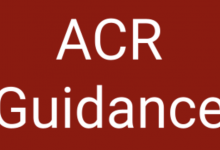Visceral and Liver Fat Linked With Men's High Urate Save

Both visceral and liver fat accumulation significantly increased the risk of hyperuricemia in men, a cross-sectional Japanese study found.
Compared with the lowest quintile of intra-abdominal fat, the highest quintile was associated with an almost five-fold increased risk of high uric acid (OR 4.72, 95% CI 2.19-10.18,P0.001), according to Tomoshige Hayashi, MD, PhD, of Osaka City University, and colleagues.
And for the liver-to-spleen ratio, where a low ratio reflects greater quantities of fat in the liver, the lowest quintile had the highest risk of hyperuricemia (OR 2.79, 95% CI 1.35-5.76,P=0.018), the researchers reported online in Arthritis Care & Research.
Hyperuricemia is not only an important risk factor for gout, but also has been linked with other disorders including diabetes, hypertension, and the metabolic syndrome.
"Moreover, elevated serum uric acid is associated with an increased risk of cardiovascular diseases, cardiovascular mortality, and all-cause mortality," Hayashi and colleagues wrote.
While both obesity and fatty liver have been associated with the metabolic syndrome, it has not been determined whether visceral adiposity and fatty liver in turn are associated with elevated levels of uric acid.
To explore this possible association, the researchers conducted an analysis of data from the Ohtori Study, which is a prospective study looking at the relationships between chronic disease and body composition among Japanese men.
The study cohort included 801 men whose mean age was 49.
Various measures of adiposity, including intra-abdominal fat, total fat, thoracic and abdominal subcutaneous fat, and subcutaneous thigh fat, were assessed using CT.
Liver-to-spleen ratio, which represents hepatic steatosis, was determined according to CT attenuation in Hounsfield units of the liver and spleen.
Multivariate analyses adjusted for a number of factors, including age, alcohol use, smoking, physical exercise, immunoreactive insulin, C-reactive protein, diabetes, and hypertension.
The prevalence of hyperuricemia, defined as serum uric acid level above 7 mg/dL, was 19.6%. Compared with the men whose uric acid was within normal levels, those with hyperuricemia had higher blood pressure, C-reactive protein, and immunoreactive insulin, drank more alcohol, and exercised less.
They also had significantly higher mean intra-abdominal fat area (94.4 versus 71.4 cm2), greater abdominal subcutaneous fat area (139.9 versus 116.8 cm2), total fat area (412.7 versus 338.3 cm2), and total subcutaneous fat (317.3 versus 266.9 cm2,P0.001 for all).
On the multivariate analysis, men in quintiles 3 and 4 of intra-abdominal fat had increased risk of hyperuricemia (OR 2.35, 95% CI 1.12-4.92 and OR 2.70, 95% CI 1.29-5.68), although the risks were not as high as for quintile 5.
In several models adjusting for the different adiposity variables, only intra-abdominal fat was significantly associated with hyperuricemia.
While the lowest quintile of liver-to-spleen ratio had the highest risk of hyperuricemia, increasing risks of hyperuricemia also were seen with three other quintiles:
- Quintile 2, OR 2.15 (95% CI 1.06-4.34)
- Quintile 3, OR 2.34 (95% CI 1.16-4.75)
- Quintile 4, OR 1.98 (95% CI 0.96-4.07)
"These cross-sectional data demonstrated that both greater visceral adiposity and lower liver-to-spleen ratio were significantly and independently associated with the prevalence of hyperuricemia.... These findings were independent of age, daily alcohol consumption, regular physical exercise, smoking habits, diabetes status, hypertension status, other adipose depots, and immunoreactive insulin," Hayashi and colleagues observed.
The mechanisms by which visceral and liver fat influence uric acid levels are unclear. One suggestion has been through inadequate excretion of uric acid because of hyperinsulinemia, shown to lower uric acid excretion in healthy individuals.
And while hyperinsulinemia has been linked with both visceral adiposity and fatty liver, adjustment for immunoreactive insulin in this study did not alter the associations between hyperuricemia, visceral adiposity, and fatty liver.
"Therefore, visceral adiposity and liver fat may have effects on hyperuricemia through mechanisms unrelated to hyperinsulinemia," the researchers noted.
"Further prospective studies may clarify whether reduction of visceral fat or liver fat might reduce serum uric acid levels," they concluded.
Limitations of the study included its cross-sectional design, which does not allow assumptions about cause-and-effect relationships to be drawn, and its inclusion of only Japanese men, so the generalizability to other populations is unclear.
The authors reported no financial disclosure.
This article is brought to RheumNow readers by our friends at MedPage Today. This article was originally published on October 7, 2015.
[Image credit: Pixabay.com]










If you are a health practitioner, you may Login/Register to comment.
Due to the nature of these comment forums, only health practitioners are allowed to comment at this time.